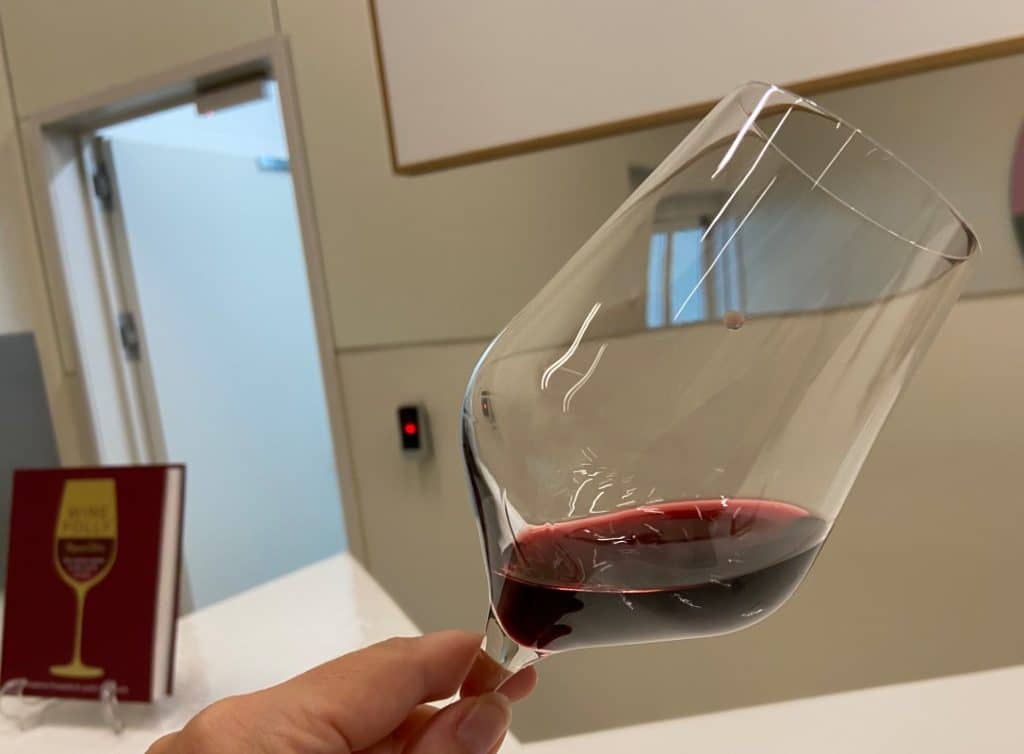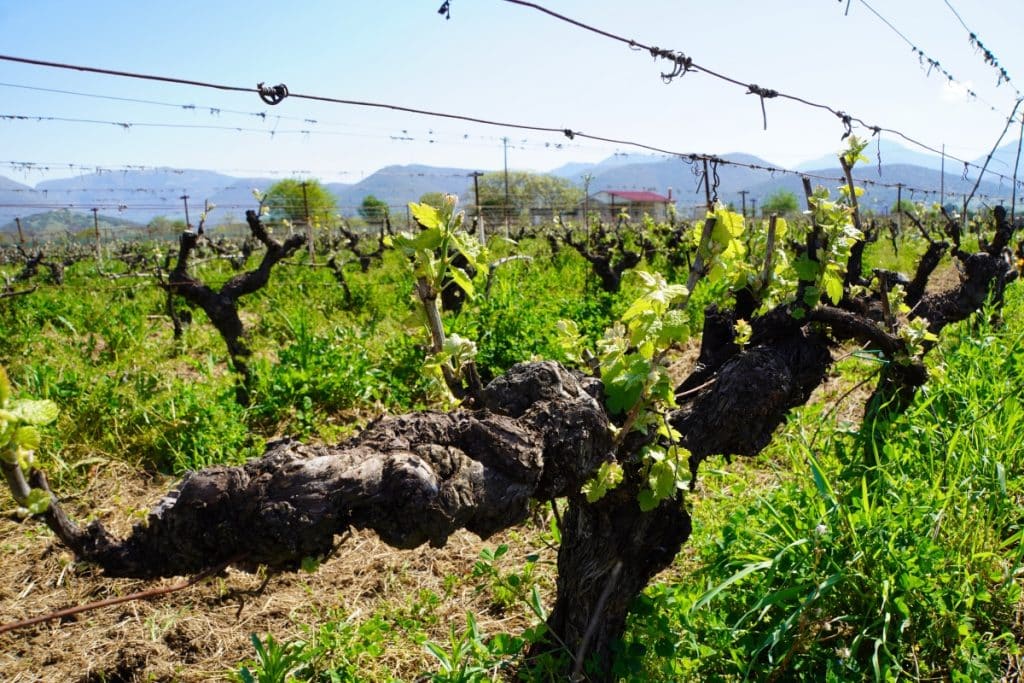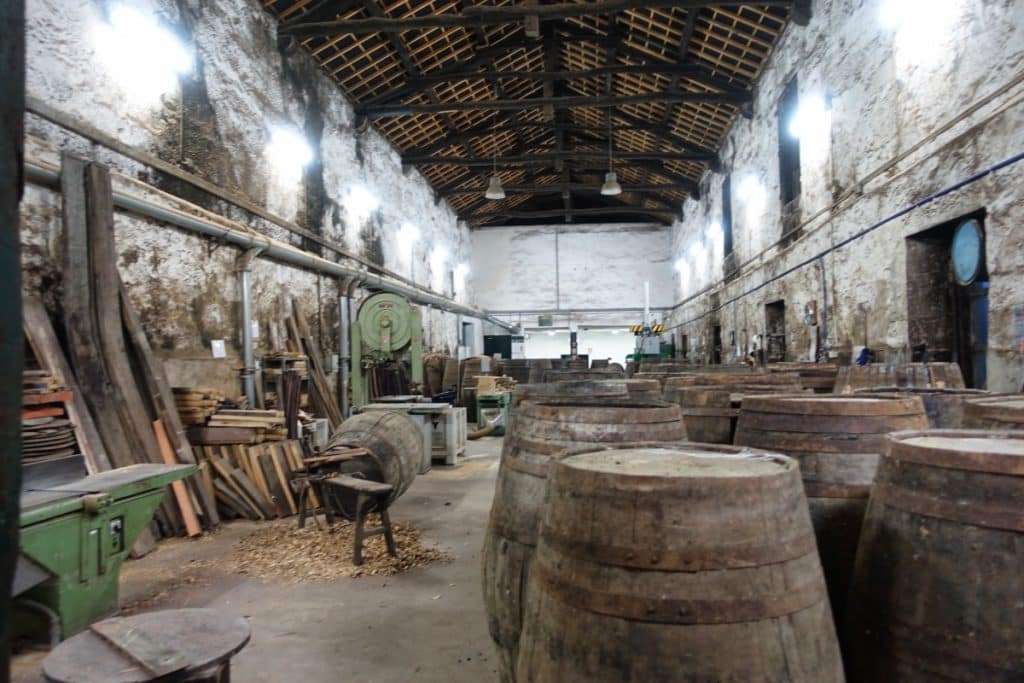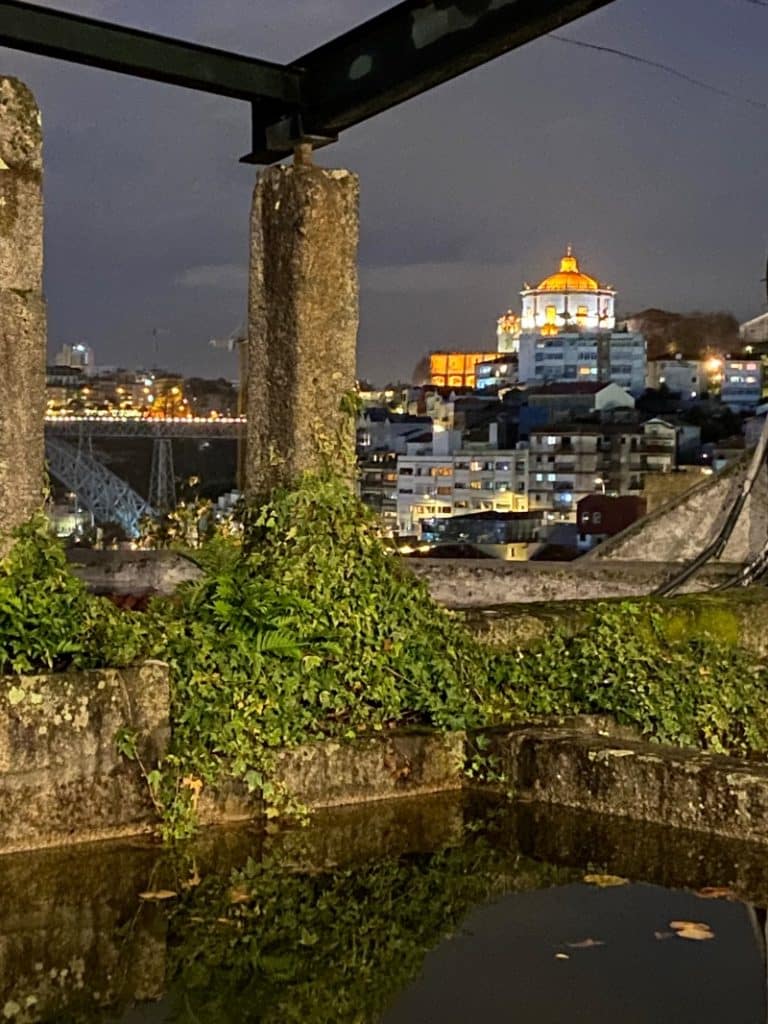What would a stay in Porto be without port wine – not complete! Discover the best port wine cellars in Porto, taste a wide variety of port wines and enjoy the vibrant life of the city.
What is port wine?
Port wine or port is a sweet wine that comes from the Douro Valley in Portugal. It takes its name from the city of Porto. The producers brought it there to mature and store it. They then shipped the wine from the port wine cellars in Porto all over the world.

Port wine is a protected designation of origin within the European Union. Only grapes from vines that grow in the fairly limited area of the Douro Valley may be used. The area covers around 250,000 hectares, of which around 46,000 hectares are planted with vines. Over 80 different grape varieties grow there, of which only around 30 are approved for the production of port wine.
There are red, white and rosé port wines, which are divided into different classifications depending on style, maturity and quality.
How is port wine made?
As with any wine, the grapes must of course first be harvested and then pressed. The winemaker then sets the must to ferment.
So far, the process is the same as for any wine production. But then the process that turns wine into port begins. Ethyl alcohol is added to the fermenting must. The fermentation is stopped by the so-called spraying. The residual sugar remains and gives the port wine its sweet taste. This process is the decisive step for the winemaker. The addition of brandy depends on how far the wine has fermented. In the end, the finished port wine must have an alcohol content of 19-22%.

The advantage of this processing method is not only the inimitable taste, but also the long shelf life. It is even common for port wine to mature in its barrels for at least 2 years. Some types of port wine even mature for much longer. However, this depends on the vintage. There is not often a “very good year” that allows storage for more than 6 years without the wine losing quality. These wines are then stored in the bottle.
Port wine classifications
One of the most important classifications that even a layman should know is the distinction between “Ruby”, “Tawny” and “Vintage”. In addition to the well-known red port wine, there are also white and rosé port wines.
All other sub-classifications and designations have only confused me. I think they will be interesting for a wine lover. For a layman who would like to drink port wine in Porto, this classification is sufficient.

Ruby port wine
Ruby is a fairly young wine that is only stored in barrels for a short time before being bottled. It is made from grapes from an average vintage. If this wine is stored for too long, it loses its flavor. A Ruby could still mature into a Tawny if it is blended and stored in a pipe (small barrel).
The young wine has a strong taste of red grapes and a strong ruby red color.
Tawny port wine
If the harvest is an above-average vintage, the port wine improves in taste with longer storage. These vintages initially remain a little longer in a barrel and are then filled into the pipe (small barrel) or into bottles for further storage. The wine matures faster in the pipe, as the barrel is somewhat permeable to air. The wine also takes on the taste of the wood and becomes somewhat lighter in color. The color spectrum ranges from garnet red, chestnut red and orange-red-brown to very light amber or golden tones.

An Old Tawny Port is aged longer in small wooden barrels and is considered to be of higher quality than a Tawny. The designation is usually only used in conjunction with one of the three age indications: 10, 20, 30 years. An Old Tawny may be blended: for example, a 20-year-old Tawny may consist of half 10-year-old and half 30-year-old Tawny.
The port wine hardly loses its flavor in the opened bottle, even after a long time.
Vintage port wine
The wines of the so-called top vintages are very rare. A top vintage is officially recognized by a commission. The winemaker bottles this port wine as early as possible and then allows it to mature for at least 10 years. It is often the case that the vintage wine only fully matures in taste after decades, as the ingredients only gradually transform in the tasteless, almost airtight and preferably dark bottle without direct influence from the environment.
Wine drinkers should bear in mind that opened bottles quickly lose their quality.
White Port
White Port is made from white grapes and is aged for around 3 years. This port wine is only differentiated by the degree of sweetness: very sweet, sweet, semi-dry, dry, very dry

Rosé Port
Rosé Port has also been available since 2008 – it has become one of my favorite wines over the course of numerous port wine tastings. Croft played a leading role in its development and other companies now have rosé in their portfolios. In terms of taste, rosé is somewhere between white and ruby; it is usually light and fruity.
Port wine tasting in Porto: Which port wine cellar to choose in Porto?
Visiting the port wine cellars in Porto is one of the most popular and touristy things to do in the city. The prices and the offer vary quite a lot. What we also found difficult was choosing a wine cellar. If you don’t know anything at all, you’re really overwhelmed by the variety on offer.
For wine lovers and port connoisseurs, the tip is: avoid the cheap tastings! The wines tasted here are of a lower quality and it is often more of a mass processing without much explanation.

For newbies, it doesn’t matter at the first wine tasting, it was only later that we really tasted the differences. We also noticed that some of the large port wine cellars in Porto only offer tastings in combination with a tour of the wine cellar. This was still possible at two of the wineries we visited. After that, the tour, which usually covers everything to do with wine growing, port wine production and family history, became rather boring. We then tried to visit a port wine tasting without a guided tour.
Port wine cellar in Porto: Calém
Calém port wine is one of the better-known brands. Those who take part in a tour here first visit a small interactive museum. There, the visitor learns a lot about winegrowing in the Douro Valley and, of course, about the company.
Guided group tours take place at certain times. These last around 30 minutes and are offered in Portuguese, English, French and Spanish. They take you into the wine cellars with the large barrels. Here you can learn all about the storage of port wine.
The final part is the wine tasting. Depending on the package booked, the guest is presented with a different tasting package. It starts with the tasting of 2 different port wines (classic package). Those who want a little “more” can also choose the offer with 3 different port wines or the additional supplements with chocolate and cheese. The prices vary depending on the offer.
The special highlight is a combination ticket with which you can combine a fado show and the port wine tasting.
Adresse:
Avenida de Diogo Leite 344
Vila Nova de Gaia
Graham’s port wine cellar
In 1820, the Scottish Symington brothers founded the Graham port wine brand. Today, the company also owns other companies.
Before the tasting begins, you are given a professional guided tour during which you can also ask questions. These are answered with a great deal of expertise so that no questions remain unanswered at the end. The tours are offered at different times in Portuguese, English, French, Spanish, Italian, Dutch and Russian.
The subsequent port wine tasting takes place in a pleasant environment. There is a choice of different tour packages. In addition to the pure wine tasting, there is also the option of extending the tasting with chocolate and cheese. Each wine package is put together differently so that you can taste the differences very well.
Address:
Rua do Agro, 141
Vila Nova de Gaia
Poças – family-run port wine cellar in Porto
The Poças port wine cellar is one of the few port wine cellars in Porto that is still in Portuguese family ownership. It is somewhat smaller than other cellars and only offers a short tour. Tours are offered in Portuguese, English, French, Spanish and Italian.
The wine tasting takes place afterwards in a wine store. There are 3 different port wines, white, ruby and a 10 year old tawny. If you wish, you can of course extend the tasting with other options.
Address:
Rua Visconde das Devesas, 168
Vila Nova de Gaia
Cockburn’s
Cockburn’s port cellar is one of the largest port cellars in Porto. While we waited for our tour to begin, we were able to visit a small exhibition. There were showcases containing photos, documents and drawings relating to the history of the company.

During a guided tour of the wine cellar, the production of port wine was explained in great detail. I particularly liked the fact that not only the beautiful old barrels were shown, but also the modern storage tanks. The somewhat inferior port wines that are supplied to the mass market are stored there. Today, it is hardly possible to produce enough barrels for these quantities.

In one aisle, we were shown shelves with many very dusty bottles. These were vintage port wines, some of which had been stored there for 20 years or more.

The work of the coopers, the barrel makers, is something very special. Cockburn’s has a cellar area where coopers repair and make wine barrels. If you take part in a guided tour during the week, you may be lucky enough to look over the workers’ shoulders.

I really enjoyed the tour. The guide was very easy-going and did an excellent job of explaining things. The tours are offered in Portuguese, English, French and Spanish.
Finally, we went to the port wine tasting. We had booked a package in which we were introduced to 3 port wines: Cockburn’s Special Reserve, Cockburn’s Late Bottled Vintage, Cockburn’s Tawny Port 10 years.

The wines were already very different in color. I could also quickly recognize differences in the smell. It was easy to distinguish the fruity notes and the Tawny in particular smelled quite “heavy” and intense. I personally liked this port the best. The most popular port wine from Cockburn’s is the Special Reserve. I found this one far too sweet. But that’s how different tastes can be.
Address:
Rua Serpa Pinto, 346
Vila Nova de Gaia
Burmester
Burmester’s cellars are located directly below the beautiful bridge that leads from Porto to Vila Nova de Gaia.

Even on request, wine tasting was only possible in conjunction with a guided tour. As we had already been on a tour that day and only wanted to experience the different tastes, we decided not to visit.

At Burmester, guided tours are offered in Portuguese, English, Italian, Spanish and French. As in the other port wine cellars in Porto, you can book various packages that include different port wines.
Address:
Largo Dom Luís I 1,
4400-111 Vila Nova de Gaia
Ferreira
Antónia Ferreira entered a male domain when she founded her port winery. This alone makes the visit something special and unique. Here you will also find one of the few tours offered in German. This is certainly a reason why many German vacationers like to go on a discovery tour there.
During the tour, you can visit a small museum with personal items belonging to the company founder, learn all about port wine and, of course, see the impressive wine barrels in the cellars. There is also the opportunity to visit the former cooperage.
The port wine tasting at the end of the tour gives the guest the opportunity to try different port wines.
Address:
Avenida Ramos Pinto, 70
Vila Nova de Gaia
Taylor’s
Most visitors to Porto know the port wine producer Taylor’s. The wine cellar is not quite central and is located slightly above the city. From the terrace, you have a fantastic view of Porto, especially in the evening. It’s worth going there for that alone.

If you would like to visit the Taylor’s Port Wine Cellars, you can go there at any time during opening hours. There are no guided tours, but an audio guide (in 13 different languages) that accompanies the visitor. This made it possible for us to really only listen to the information in the museum that interested us. I found this very pleasant, especially because there was no guide urging us to hurry and we could really look at everything in peace.

The tour, if you listen to all the texts, takes a good hour and passes 11 stations.

Afterwards, we went into a separate room for a port wine tasting. We were barely in the room when a waiter assigned us a table. Everyone is given two port wines to try. For us it was a Chip Dry Port (white) and a 2017 Taylor’s Bottled Vintage Port. After the glasses were poured, the waiter was no longer seen. Other guests were constantly being approached and they extended their tasting with more wines and snacks from the rather expensive menu. We apparently didn’t look like potential customers and weren’t approached any further.
The white port wasn’t quite my taste. You can really taste the alcohol here, I thought it was almost a brandy and not a wine. The red port was very good and had a pleasantly smooth taste. I would definitely have ordered another glass of this wine if we had been served more nicely.

Address:
Rua do Choupelo, 250
Vila Nova de Gaia
Sandeman
There are places where we turn around immediately and don’t give them a chance. That’s how we felt at Sandeman. A completely bored and uncommunicative person was sitting at the entrance. After we asked whether a tasting was possible without a tour of the port wine cellar in Porto, we received a curt “no”. No attempt to sell us a tour, to make the port wine palatable or to somehow win us over as paying customers.
So we turned around and now we don’t know whether the visit would have been worthwhile.
Address:
Largo de Miguel Bombarda 3,
4400-072 Vila Nova de Gaia
Espaço Porto Cruz
The Porto Cruz, where you can only taste port wine, is located directly on the shore. It is purely a sales room, where guided groups also make a short stop. We received super friendly service here and our tasting was professionally guided every step of the way. The price of the port wine tasting was similar to that in the port wine cellars.

I opted for a tasting with 4 different port wines and 4 chocolates. Patrick tasted 3 port wines. From the very first pour, it was noticeable that the glasses were filled much more generously than in the wine cellars.

At my port wine tasting, I was presented with a white port, a rosé, a ruby and a tawny. My clear favorite – the rosé!
It was a really pleasant visit for us, during which I got to know a completely different flavor with the rosé.

Address:
Largo Miguel Bombarda,
4400-222 Vila Nova de Gaia
Port wine cellar in Porto: Augusto’s
Somewhat hidden in a small alley, we came across Augusto’s. The pouring rain was certainly one of the reasons why we stopped there. It was a good choice, we received a very friendly welcome and there was even the opportunity to taste the port wines without a wine cellar tour.

We drank 3 different port wines, which we really enjoyed. My favorite was the Tawny with its full-bodied taste.
Address:
R. de França 10,
4400-174 Vila Nova de Gaia
Piano Douro Valley
The rain had not let up and so we went just two doors down to a restaurant that also offers port wine tastings.
Four different wines with some cheese quickly made us forget the bad weather. The wines were not quite as intense in flavor and I found them to be less sweet than other port wines I had tasted that day.

A great place to taste wine away from the well-known port wine cellars.
Address:
R. de França 14,
4400-174 Vila Nova de Gaia, Portugal
How to save money in the port wine cellar in Porto
Drinking port wine in Porto can be quite expensive in the long run. Especially if you want to try out many different offers, you should look carefully and search for offers.
There are several ways to save money.
The simplest method:
Pick one of the cheap port wine cellars in Porto such as Calém.
Book a combined ticket:
If you know exactly that you want to visit other activities in Porto, you can book combination tickets. For example, there is the port wine cellar + fado show offer or the boat trip + port wine combination.
Visit small tasting rooms:
Away from the large wine cellars, there are numerous small bars, restaurants and showrooms that present a diverse range of products. Here you can also just drink a port wine.
Visit to the Douro Valley:
We were also in the Douro Valley and learned about different port wines at three different stops there. A great opportunity not only to drink wine, but also to get to know the surrounding area.



















Leave a Reply